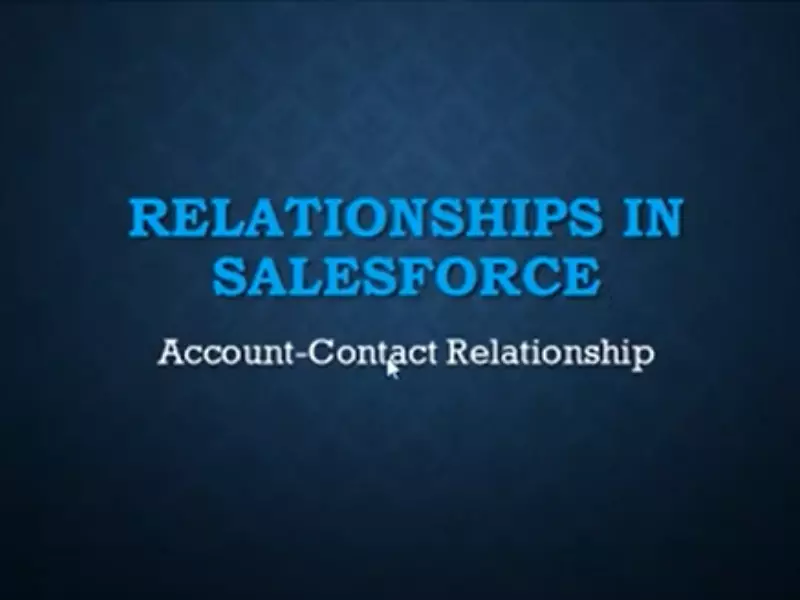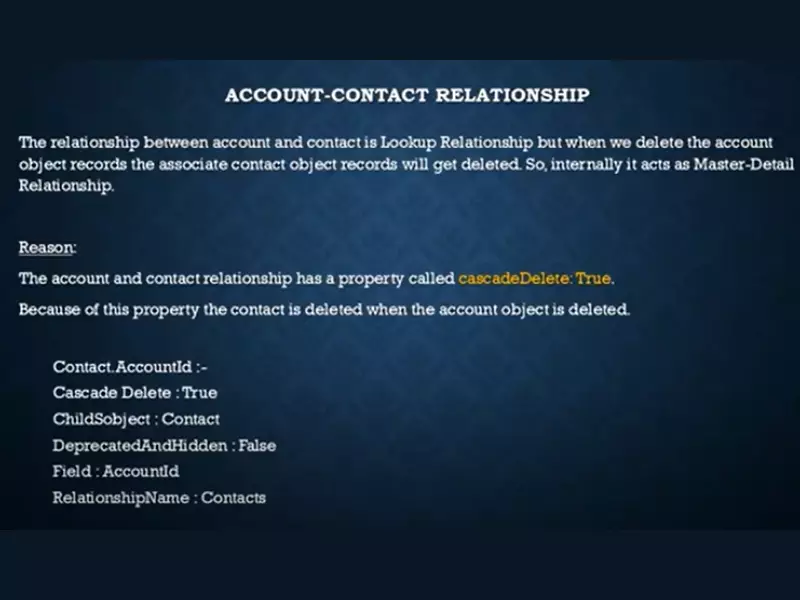Salesforce is a powerful CRM platform that allows businesses to easily manage their customer relationships. One of the great features of Salesforce is its ability to link accounts and contacts together, allowing businesses to track customer data in a streamlined and efficient manner. In this blog, we will discuss the relationship between accounts and contacts in Salesforce, and how this relationship can be used to help businesses better manage their customer data.
In this blog, we will discuss the relationship between accounts and contacts in Salesforce, and how this relationship can be used to help businesses better manage their customer data.

Overview of the account object
The relationship between an Account and a Contact in Salesforce is pivotal. An Account in Salesforce is a representation of an organization such as a company, government, or non-profit.
The Account object stores information about the organization and the Contact object stores information about the individual associated with that Account. By linking these two objects together, Salesforce provides a powerful way to track relationships between organizations and the people associated with them.
This provides invaluable insights into how customers, partners, and employees interact with the organization, and how the organization can better serve them.
Overview of the contact object
The relationship between Accounts and Contacts in Salesforce is an important one. Accounts are the primary entities in Salesforce, representing businesses, organizations, and other entities. Contacts are the individuals associated with Accounts, such as employees, customers, and vendors.
This relationship is critical for tracking customer information, managing customer relationships, and making sales. Through the power of Salesforce, Accounts and Contacts can be related to each other in various ways.
This allows for a unified view of customer information, creating an efficient and effective system for managing customer relationships.
How account and contact objects work together
Accounts and Contacts are two separate, yet closely related, objects in Salesforce. Accounts represent the company or organization that a customer belongs to, while Contacts represent the individual customer or contact within that organization.
Accounts are the parent object, while Contacts are the child. This relationship allows for a deeper level of organization and segmentation for customers, allowing you to better understand and serve them.
It also allows you to access information from the parent record, such as the Account name, in the Contact record. This helps to tie each Contact to their respective Account and make sure all data is properly linked and organized.

Benefits of leveraging the relationship between account and contact objects
The relationship between accounts and contacts in Salesforce is one of the most powerful tools available to business owners. Accounts represent organizations, while contacts represent individuals associated with those organizations. Leveraging this relationship can provide a wealth of information and insight into customer interactions.
Leveraging this relationship can provide a wealth of information and insight into customer interactions. When used correctly, it can help businesses better understand their customers, identify new opportunities, and improve sales and marketing campaigns. With Salesforce, businesses can use accounts and contacts in tandem to track leads, build customer profiles, and measure performance.
This powerful relationship helps companies improve customer relationships, gain deeper insights, and drive more profitable business outcomes.
Best practices for managing account and contact objects
Account and contact objects are integral parts of any successful Salesforce implementation. Both are used to store customer information, but they serve different purposes.
Accounts are used to represent organizations that a company has a business relationship with, while contacts are used to represent individuals associated with those organizations. For the most efficient and effective use of Salesforce, it is important to understand the relationship between accounts and contacts. By creating and maintaining this relationship, users can better identify customers and ensure that all customer contact information is up-to-date.
Additionally, when setting up automation rules and triggers, understanding the relationship between account and contact objects is essential for success. Establishing best practices for managing accounts and contact objects within Salesforce can help ensure that customer relationships are effectively maintained and that data is used to its fullest potential.
Closing thoughts on account and contact relationship in salesforce
The relationship between an Account and Contact in Salesforce is a vital one. An Account is the organization that a Contact is associated with, and Contacts are the individuals who represent the Account.
Both Accounts and Contacts are stored in Salesforce and connected to each other. This relationship helps with organizing and tracking information related to Accounts and Contacts, which is beneficial for both sales and marketing teams. With this relationship, businesses can easily manage customer information, create reports, and track customer interactions.
By understanding the relationship between Accounts and Contacts in Salesforce, businesses can ensure that they are better able to track and manage customer data.
Final Touch
In conclusion, the relationship between an account and contact in Salesforce is that an account is a company or organization that has a relationship with an individual contact. Contacts are associated with an account, meaning that when a contact is created, it is associated with a certain account. This relationship between accounts and contacts allows Salesforce to provide a comprehensive view of the customer’s data and interactions with the business.
This relationship between accounts and contacts allows Salesforce to provide a comprehensive view of the customer’s data and interactions with the business. It also allows businesses to better manage their customer relationships by having access to all the data related to a given account. This helps businesses to better understand their customer’s needs and preferences, allowing them to provide a better customer experience.
